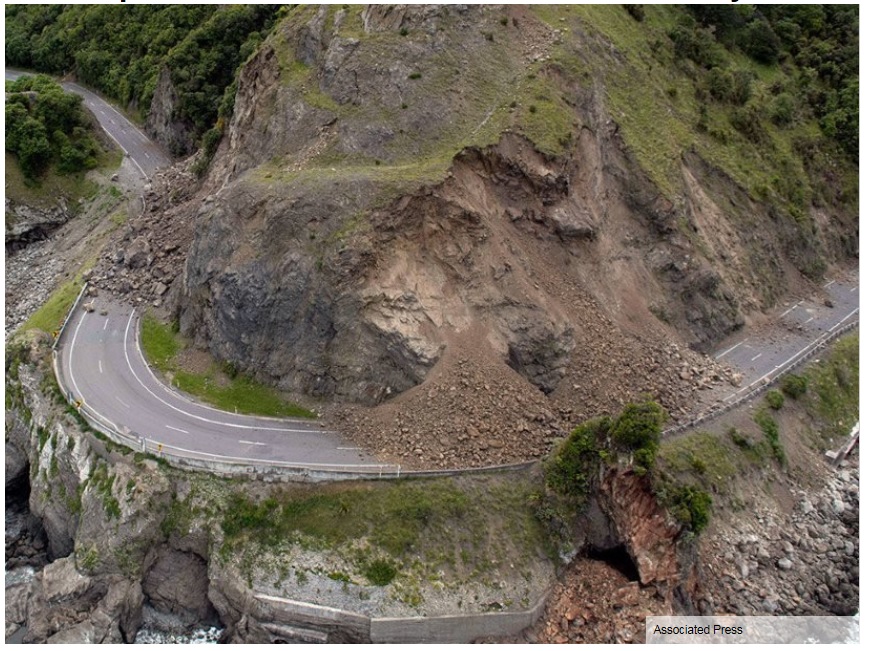November 16, 2016
The earthquake that struck New Zealand shortly after midnight local time on 14 November, killing two people, is a stark reminder that New Zealand's seismic activity "is a lot more complicated than we thought," says James Goff, a seismologist and tsunami expert at the University of New South Wales in Sydney, Australia. The ruptured fault is not along the tectonic plate boundaries where major quakes are expected. "We are finding out again that there is seismic activity that we didn't really know about," Goff says.
 The U.S. Geological Survey placed the epicenter of the magnitude-7.8 earthquake near Kaikoura, a coastal tourist town 92 kilometers northeast of Christchurch, at a depth of about 23 kilometers. The shallow quake caused extensive damage to infrastructure. Landslides blocked the main highway through the region and temporarily dammed the Clarence River. Aftershocks continued throughout the day Monday.
The U.S. Geological Survey placed the epicenter of the magnitude-7.8 earthquake near Kaikoura, a coastal tourist town 92 kilometers northeast of Christchurch, at a depth of about 23 kilometers. The shallow quake caused extensive damage to infrastructure. Landslides blocked the main highway through the region and temporarily dammed the Clarence River. Aftershocks continued throughout the day Monday.
The earthquake’s epicenter was not on a known major fault, says Kevin McCue, an engineering seismologist at Australia's Central Queensland University in Rockhampton. New Zealand straddles the collision zone between the Australian and Pacific tectonic plates. The boundary between the two plates runs off the east coast of the North Island and along the west coast of the South Island. McCue says New Zealand's earthquake hazard maps anticipate strong quakes emanating from the complex faults in those boundaries. Today’s quake, however, occurred on a little studied intraplate fault. The quake, as well as strong temblors that struck Christchurch in 2010 and 2011, indicates that the east coast of the South Island "is a far more risky place than was thought." New Zealand's earthquake hazard maps, which affect building codes, must be reconsidered, McCue says. He also worries that today's quake might increase stress on the plate boundaries, where a rupture could produce a magnitude-8 earthquake.
The quake also triggered a 1-meter-or-so tsunami, which Goff says is unusual for a fault located beneath land. He suspects that about 1 meter of coastal ground uplift resulting from the fault movement disturbed the sea floor enough to trigger the tsunami. It's not clear yet whether that local phenomenon caused significant damage.
http://www.sciencemag.org/news/2016/11/new-zealand-earthquake-rattles-experts